Collingwood Pool Installation & Maintenance Guide: Tips for Georgian Bay Homeowners
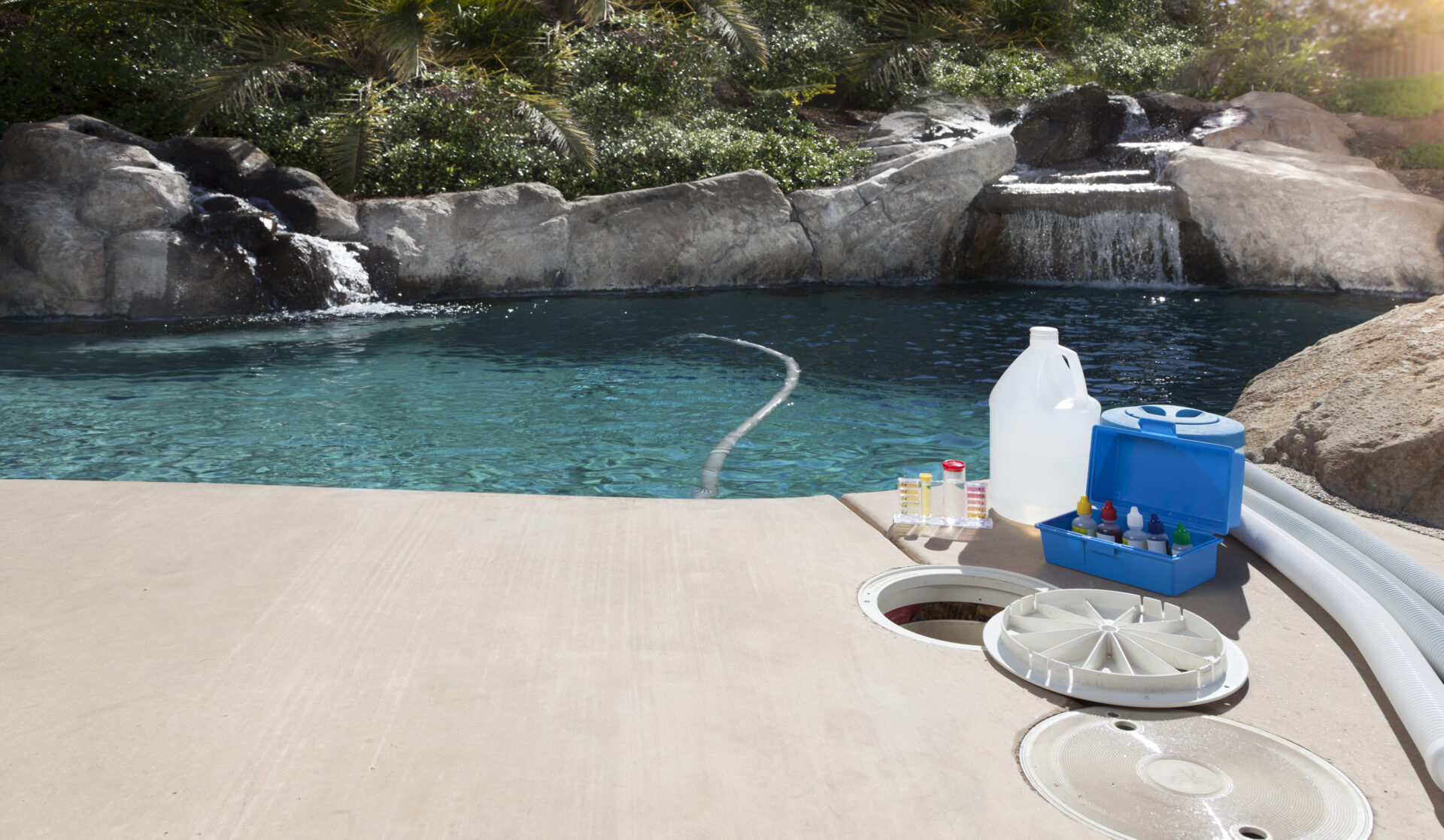
Nothing beats stepping into your own backyard and cooling off in a crystal-clear pool on a hot summer day. Beyond just a place to swim, a well-designed pool transforms your property into a place for ultimate relaxation, entertainment, and adds to the value of your home. But turning that dream into reality comes with challenges — budget concerns, construction timelines, maintenance demands, and finding the right professionals to get the job done right.
The good news? Being equipped with the right knowledge makes all the difference. This pool installation guide covers everything you need to know, from choosing the right type of pool to navigating the complexities of permits, costs, and long-term maintenance. Whether you’re stuck on choosing between a fiberglass or vinyl liner pool, exploring options with professional pool builders, or looking for design ideas to enhance your outdoor space, this guide will give you the insights needed to make informed decisions and avoid costly mistakes.
Choosing the Right Pool for Your Backyard
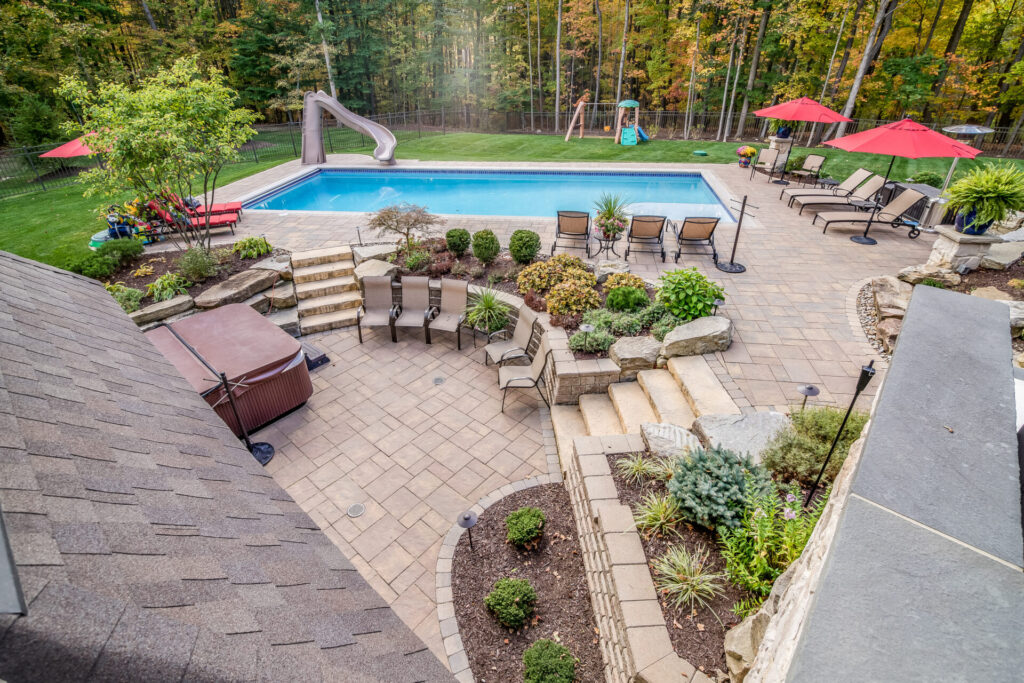
When it comes to inground pool installation, the two most popular choices are fiberglass pools and vinyl liner pools. Each option has its own set of advantages and considerations, so selecting the right one depends on your budget, maintenance preferences, and the overall look you want for your backyard.
Fiberglass Pool Installation
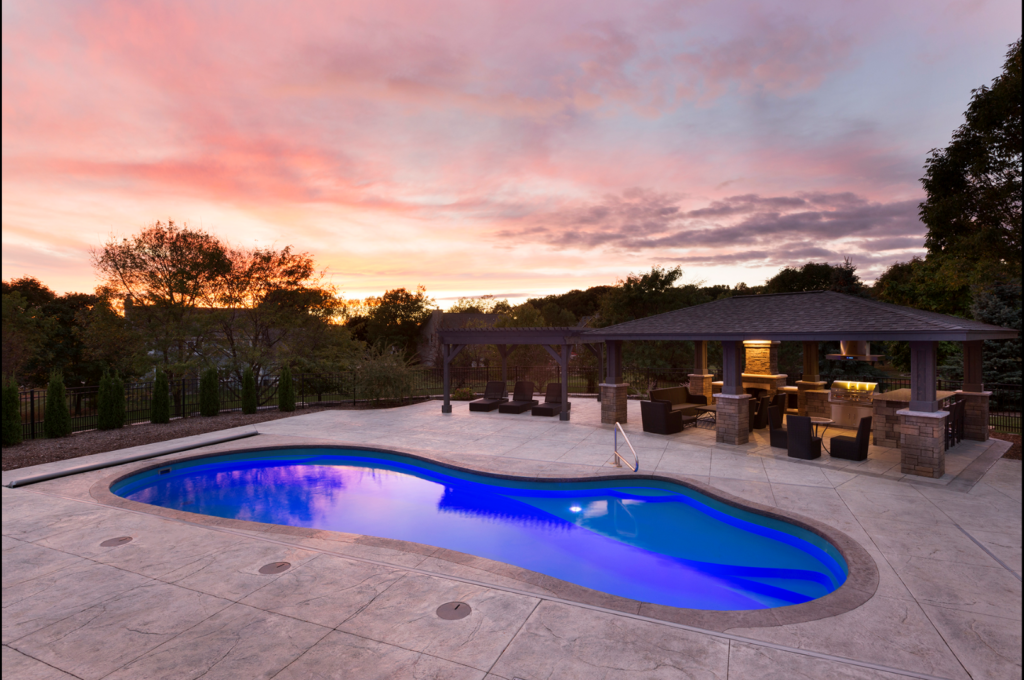
Fiberglass pools are known for their durability, low maintenance, and quick installation process. The smooth surface of a fiberglass pool resists algae growth, which means less time spent on pool maintenance. These pools are pre-manufactured and come in a variety of shapes and sizes, making them a great option for homeowners who seek a generally easy, and hassle-free installation.
Pros: Quick installation, durable, low maintenance, and algae resistant.
Cons: Limited customization options and higher upfront costs compared to vinyl liner pools.
Vinyl Liner Pool Installation
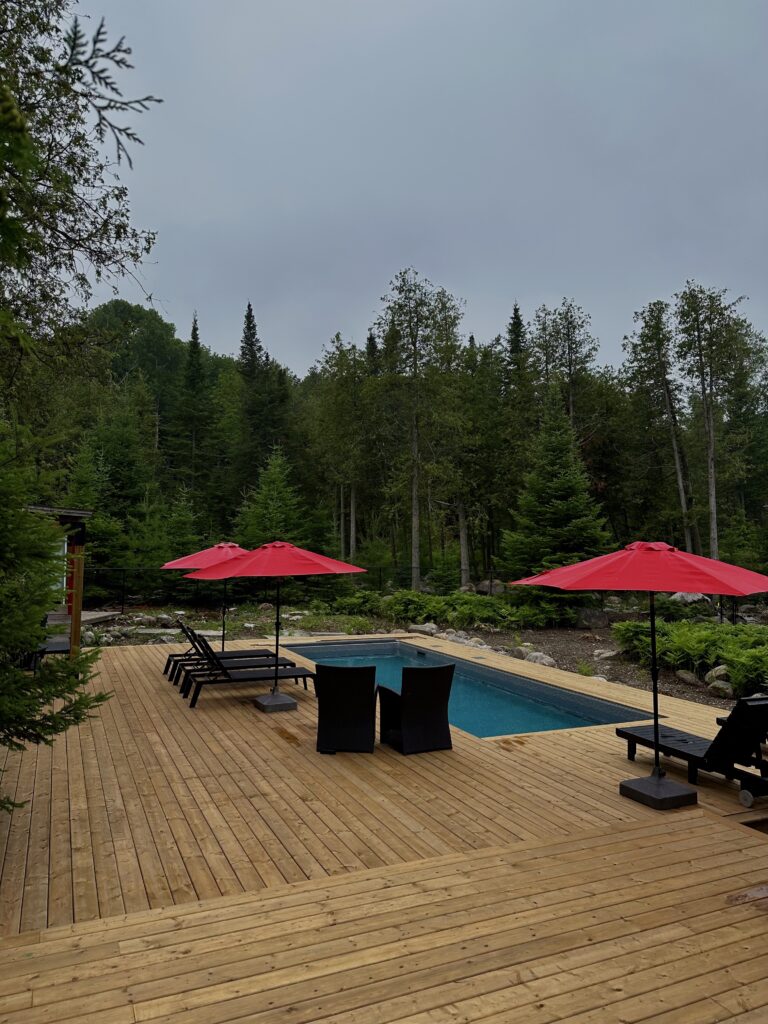
Vinyl liner pools are a more budget-friendly option when comparing costs upfront, offering customizable shapes and sizes to fit your backyard perfectly. However, it’s important to note that these pools require a liner replacement every 7-10 years, which adds to your long-term costs. Despite this, vinyl liner pools remain a popular choice due to their versatility, customization options and overall aesthetic appeal.
Pros: Affordable upfront cost, customizable shapes, and smooth surface.
Cons: Liner replacement costs and potential for punctures or tears.
Factors to Consider When Choosing a Pool Type
If you’re wondering how much pool installation costs, the answer depends on several key factors. Choosing between fiberglass, vinyl liner, and concrete pools is not just about price. It’s also about long-term value, maintenance, and how well the pool fits your lifestyle. Budget, upkeep preferences, and how you plan to use the pool all play a role in determining the best option for your project.
Budget

Fiberglass pools typically have a higher upfront price tag, but their smooth, non-porous surface minimizes algae growth and significantly reduces maintenance costs over time. They are also installed quickly, making them an excellent option for homeowners looking for a hassle-free, speedy project.
Vinyl liner pools are one of the most budget-friendly installation choices, offering design and size flexibility. However, they require periodic liner replacements every 7–10 years, which adds to long-term expenses. While they’re softer underfoot than concrete, they’re also more susceptible to tears and punctures.
Pool Maintenance
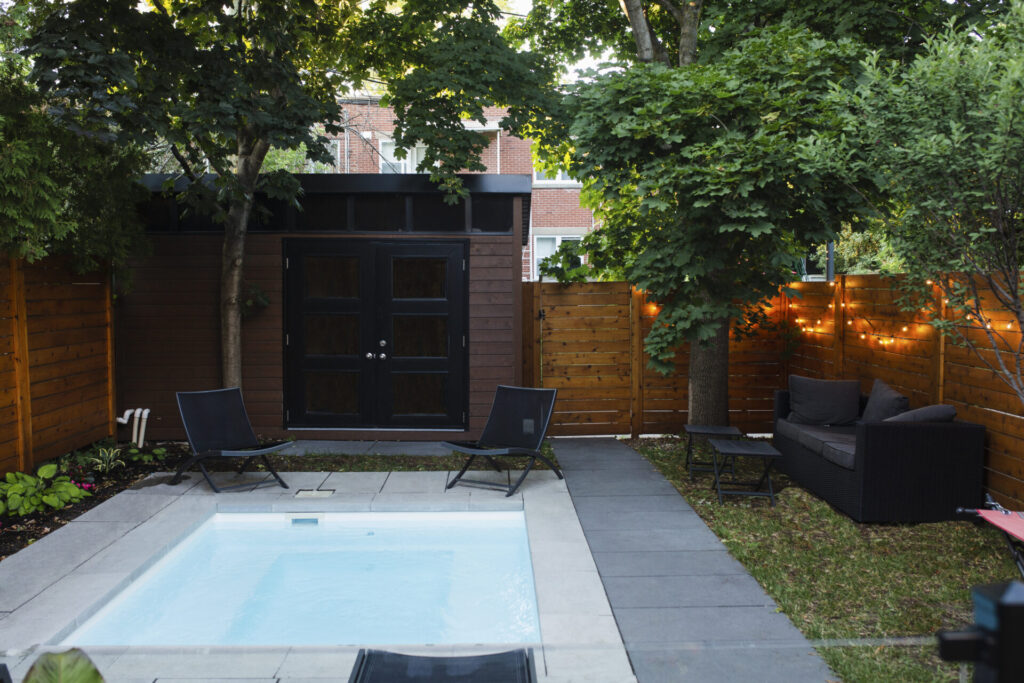
When it comes to maintenance, fiberglass pools are by far the easiest to care for, requiring fewer chemicals and less hands-on upkeep. Vinyl liner pools fall somewhere in the middle, with moderate maintenance needs. Concrete pools, on the other hand, demand ongoing attention, making them best suited for homeowners willing to commit to regular upkeep for a highly customizable and long-lasting pool.
Aesthetic Preferences
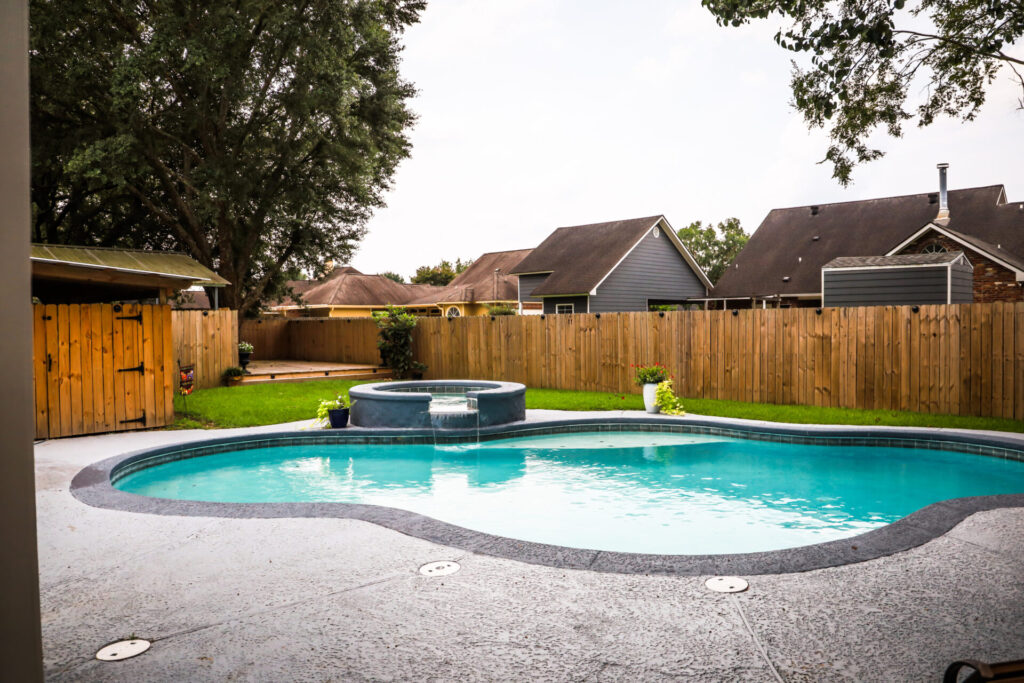
Fiberglass pools offer a stylish, hassle-free solution if you prefer a sleek, modern aesthetic with clean lines and a polished finish. Available in a variety of pre-designed shapes and colors, fiberglass pools maintain their glossy, high-end look with minimal effort. In contrast, vinyl liner pools provide a more traditional appearance, with customizable patterns and textures that can enhance the overall design of your outdoor space.
Durability
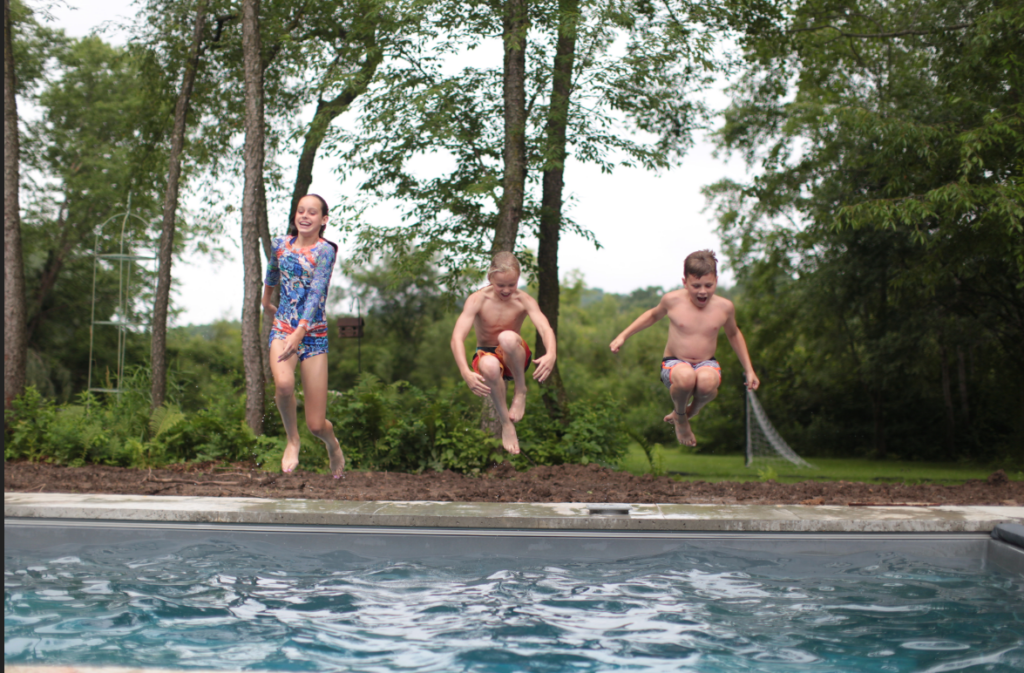
Fiberglass pools are known for their exceptional durability, thanks to their smooth, non-porous surface that resists algae growth and minimizes the need for harsh chemicals. They are also resilient to ground shifts, minimizing the likelihood of structural problems. Vinyl liner pools are cost-effective but more delicate. They can tear, get punctures, and fade over time. This means you will need to replace the liner every few years.
Still unsure which pool type is right for you? Contact our team at Georgian Bay Pools to discuss your options and get expert advice tailored to your needs.
Understanding the Pool Installation Process
Installing a pool in Georgian Bay is a multi-step process that requires careful planning, the right materials, and experienced professionals. From site preparation and excavation to plumbing, electrical work, and finishing touches, each stage plays a crucial role in ensuring a high-quality, long-lasting pool. Understanding the process ahead of time helps set realistic expectations and ensures a smooth, stress-free experience.
Step 1: Initial Planning and Budgeting

Before reaching out to pool contractors, it’s essential to outline your budget and determine how much you’re willing to invest. The cost of pool installation can vary significantly based on factors such as pool size, materials, landscaping, and additional features like waterfalls or decking.
- Budget Considerations: On average, inground pool installation costs range from 35,000 to 65,000, depending on the type of pool and additional features.
- Long-Term Costs: Don’t forget to factor in ongoing expenses like pool maintenance, repairs, and utility bills.
Step 2: Permits and Legal Requirements
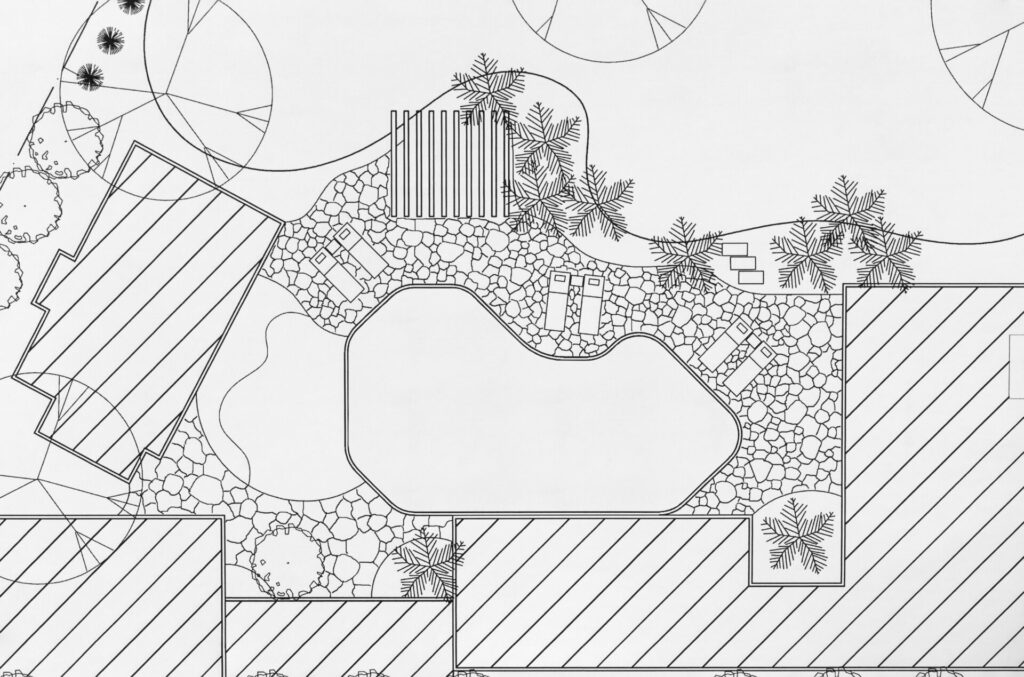
Most municipalities require pool permits before construction can begin. These permits ensure your pool complies with local zoning regulations, safety barriers, and electrical guidelines. Working with experienced pool builders near you can help streamline this process and ensure compliance with all local regulations.
- Common Permit Requirements: Fencing, safety covers, and distance from property lines are often regulated.
- Timeline: Obtaining permits can take several weeks, so plan accordingly.
Step 3: Excavation and Installation Steps
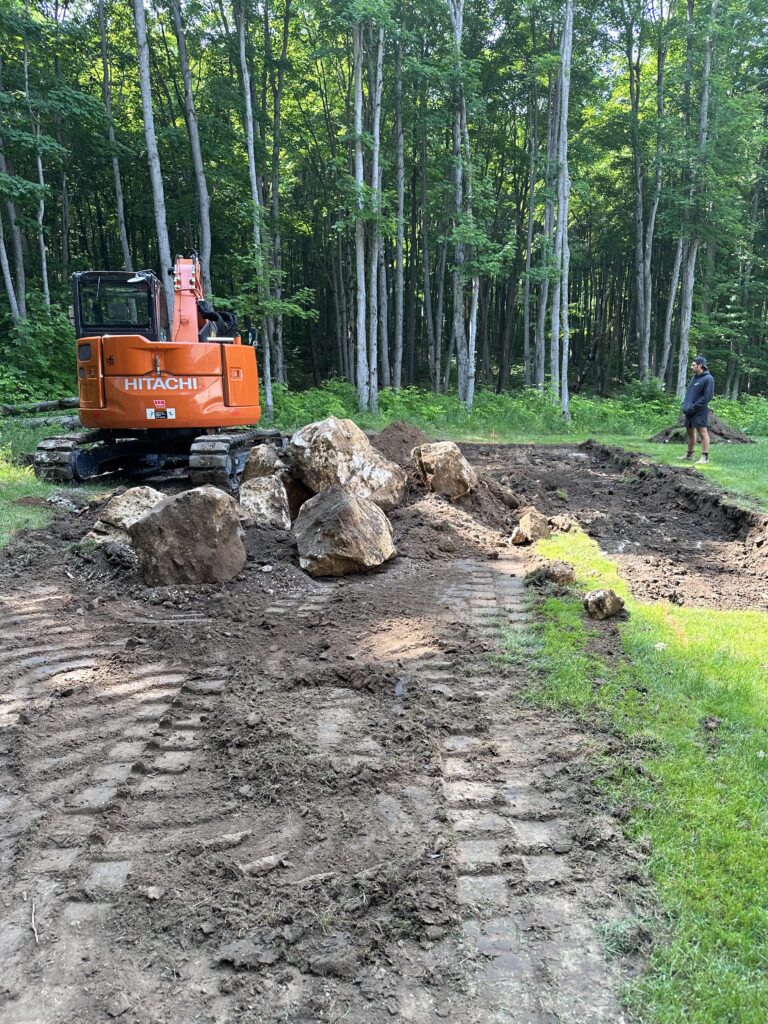
Once permits are secured, the installation process begins. Here’s a general breakdown of the pool installation steps:
- Site Preparation & Excavation: The area is marked, and excavation begins to create the space for your pool.
- Pool Shell Placement (Fiberglass) or Framing (Vinyl Liner): The chosen pool structure is installed, whether it’s a pre-formed fiberglass shell or a framed vinyl liner.
- Plumbing & Electrical Work: Pumps, filters, and lighting are installed to ensure your pool functions properly.
- Backfilling & Decking: Surrounding areas are reinforced, and decking is constructed to complete the look.
- Filling the Pool & Balancing Chemicals: Water is added, and chemical levels are adjusted to ensure safe swimming conditions.
Common Inground Pool Installation Challenges and How to Overcome Them
While pool installation is an exciting step toward creating your dream backyard, unexpected challenges can arise. Here’s how to navigate the most common hurdles:
Unexpected Costs
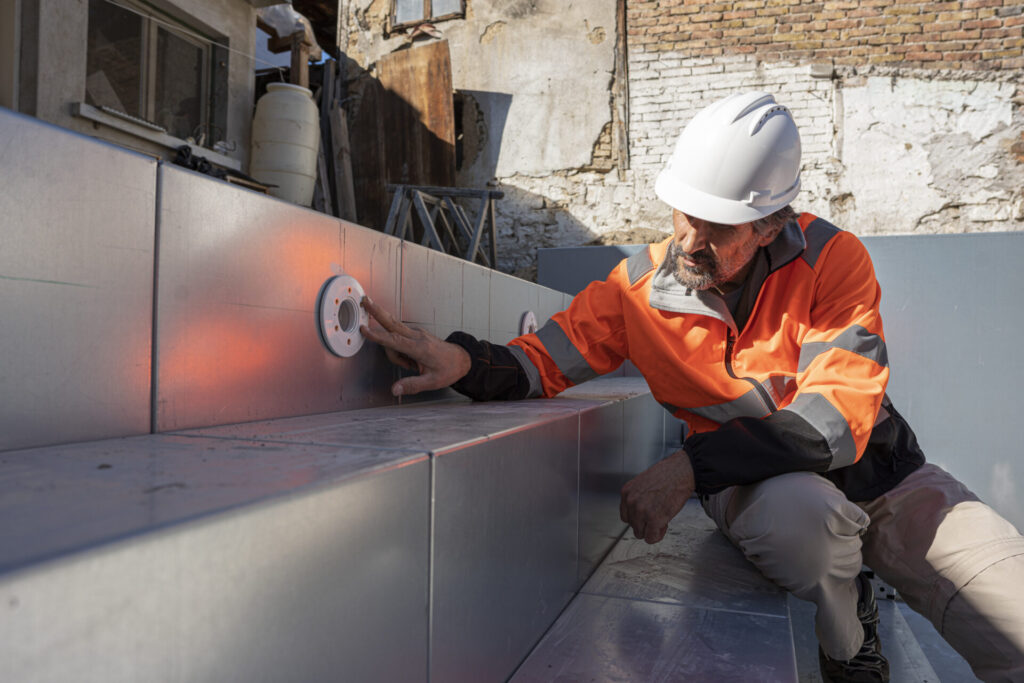
Budget overruns can happen due to unforeseen issues like rocky soil, drainage complications, or additional landscaping needs. To prevent surprises, work with a contractor who provides a detailed cost estimate upfront, including site preparation, permits, and potential add-ons. It’s also wise to set aside a contingency fund for unexpected expenses — typically 10–15% of your budget.
Weather Delays
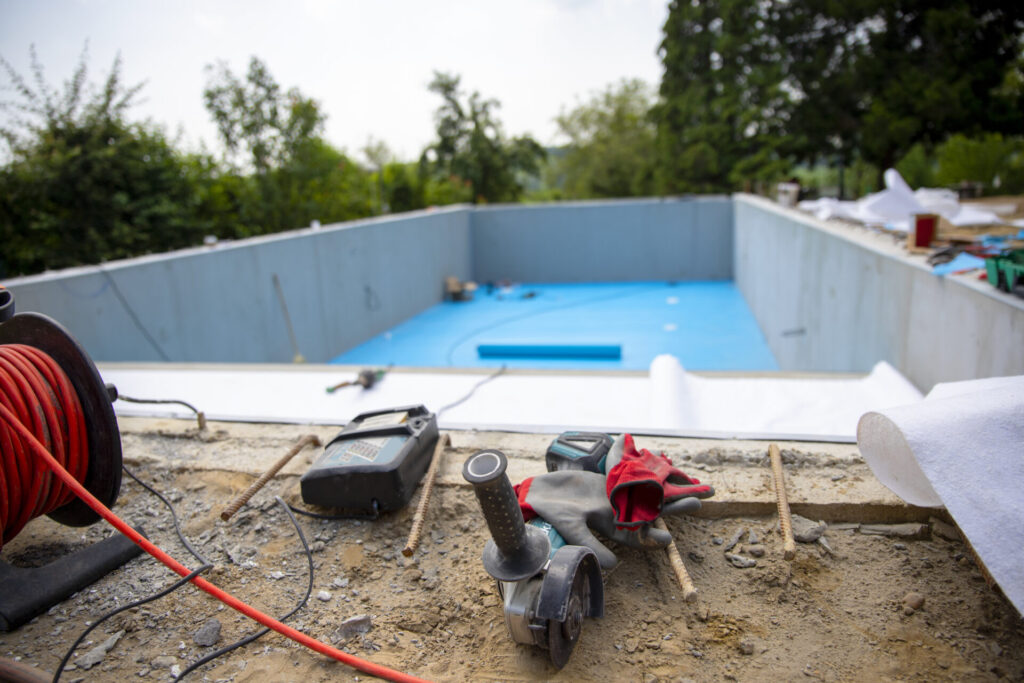
Rain, extreme temperatures, or high winds can put pool construction on hold, delaying excavation, plumbing, and more. While the weather is unpredictable, you can minimize delays by planning your pool installation during a season with stable conditions. Additionally, build some flexibility into your timeline to account for potential setbacks.
Permit Delays
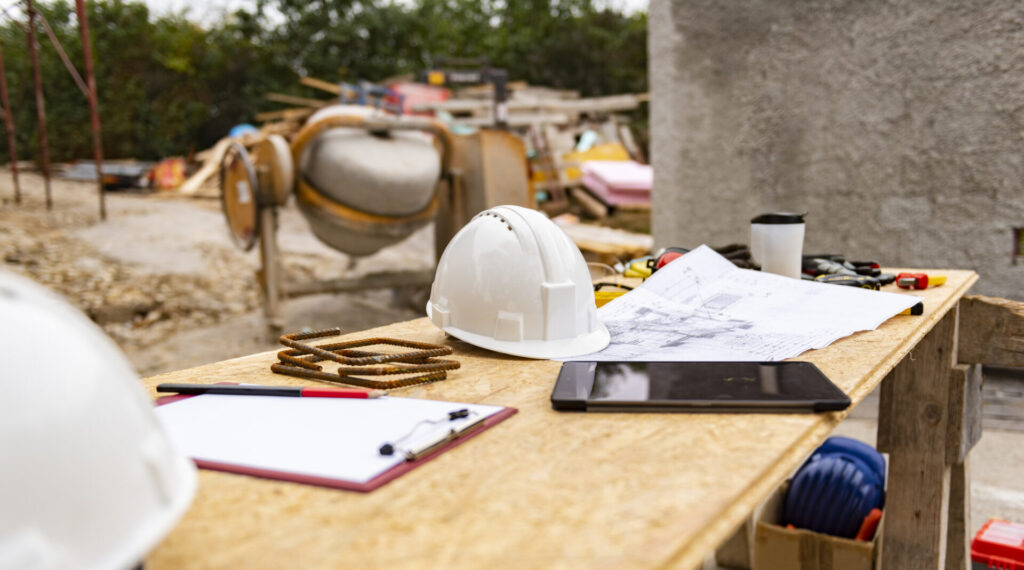
Securing permits can take longer than expected, especially if your design requires revisions or if your municipality has strict regulations. To streamline the process, work with an experienced pool builder who understands local permitting requirements and can submit all necessary paperwork promptly. Being proactive about compliance will help avoid costly delays.
Utility Conflicts
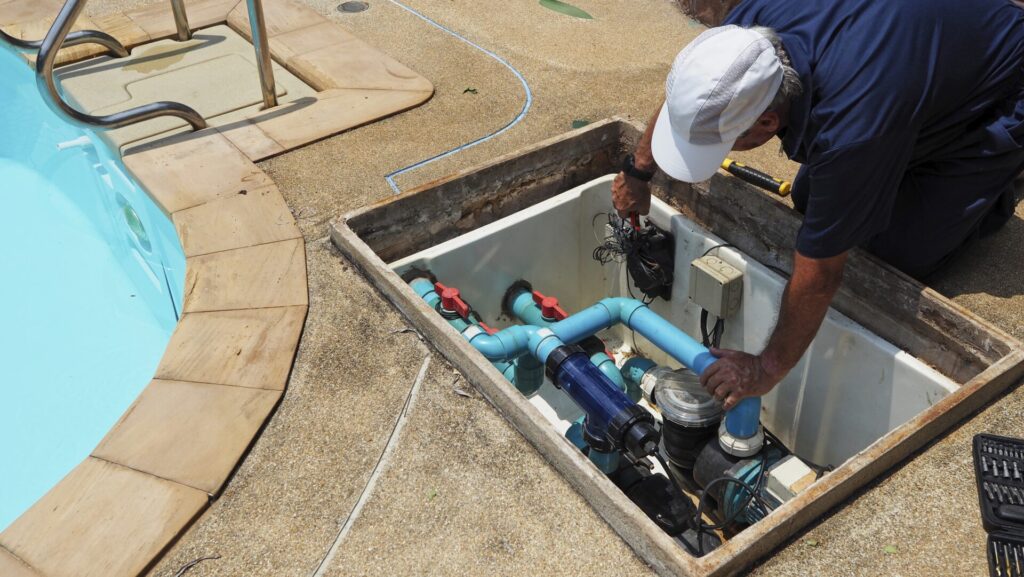
Before excavation begins, it’s critical to identify and mark underground utilities like gas, water, and electrical lines. Unexpected conflicts with these can halt progress and lead to additional costs for rerouting. To prevent this, schedule a professional utility inspection and ensure your contractor has a clear site plan before digging begins.
Initial Planning and Pool Design
The first phase of any pool installation is planning and design, laying the groundwork for a successful project. After you pick the right type of pool, the next step is to refine the details. Make sure the pool fits your outdoor space, meets your needs, and follows local rules. Careful planning at this stage helps avoid costly mistakes and ensures a smooth installation process.
Determining Pool Placement
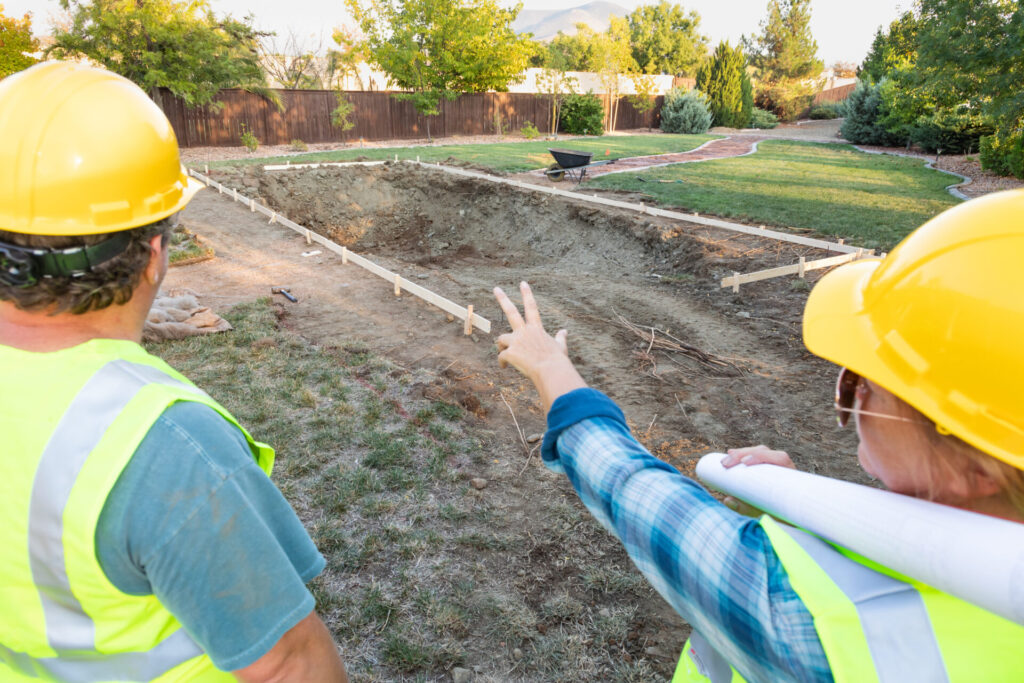
Where you place your pool has a major impact on its appearance and functionality. Thoughtful placement enhances the overall aesthetic of your backyard while also improving usability, safety, and efficiency. Key factors to consider include:
- Sunlight Exposure: A pool that receives ample sunlight stays naturally warmer, reducing heating costs and extending your swimming season. Avoid excessive shade from trees or structures that could lead to cooler water temperatures and frequent debris cleanup.
- Accessibility: Consider how easily you and your guests can access the pool from your home, patio, or outdoor seating areas. A well-placed pool should feel seamlessly integrated into your backyard design, maximizing convenience and enjoyment.
- Privacy & Wind Exposure: Wind exposure can lead to excessive evaporation and cooling, while a lack of privacy may make swimming less enjoyable. Strategically placing your pool near existing landscaping or adding windbreaks like fences or hedges can enhance both comfort and seclusion.
- Zoning & Setback Requirements: Every municipality has specific zoning laws and setback regulations that dictate how close your pool can be to property lines, septic systems, or existing structures. Researching these guidelines early in the process helps prevent legal roadblocks down the line.
Securing Pool Permits and Approvals in Georgian Bay
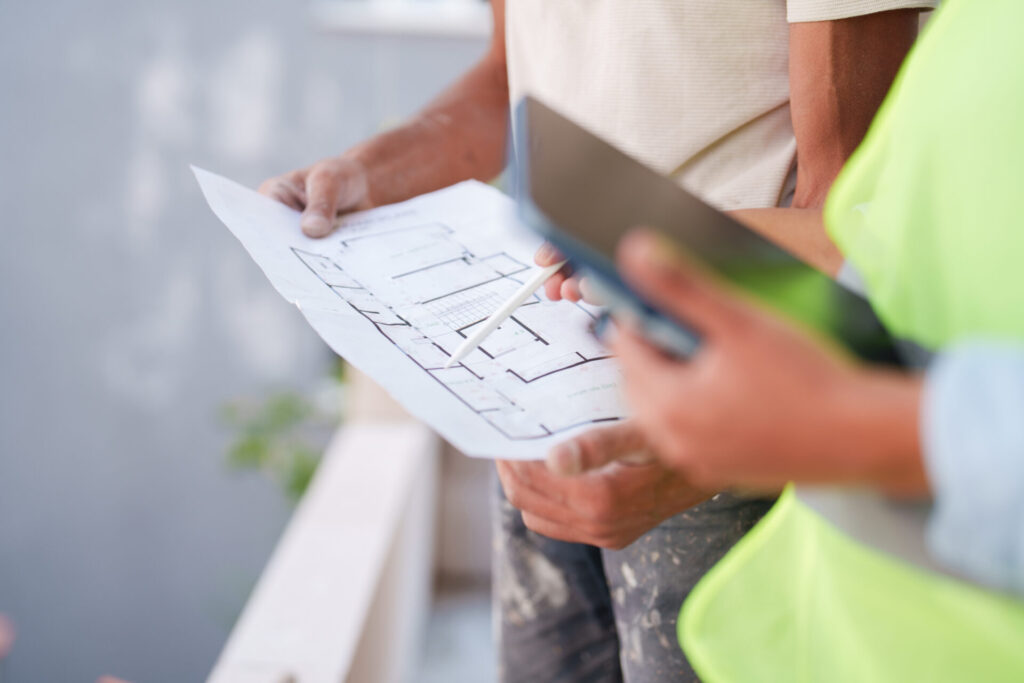
Before breaking ground, you’ll need to obtain the necessary permits to ensure your pool meets local building codes and safety regulations. This typically involves submitting detailed plans to municipal authorities and may require modifications based on zoning restrictions or environmental considerations.
Design Trends for Modern Backyard Pools
Naturalistic Designs

For a serene, resort-like atmosphere, naturalistic pools are becoming a top choice. Inspired by nature, these pools feature organic, freeform shapes, pebble-finished surfaces, rock waterfalls, and lush landscaping to create the illusion of a natural swimming hole. Many homeowners also opt for beach entries, which provide a gentle slope into the water, mimicking the shoreline of a lake or ocean.
Infinity Edges
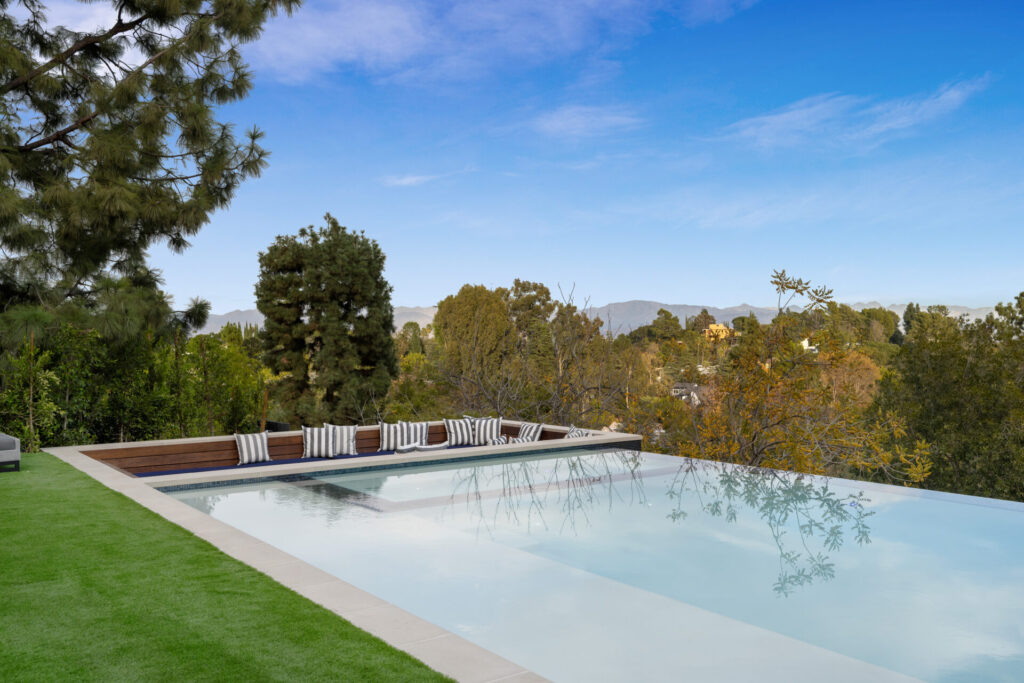
Infinity pools are the epitome of luxury, seamlessly blending the water’s edge with the surrounding landscape. This design creates a visually stunning vanishing edge effect, making it ideal for properties with scenic backdrops. While common in high-end resorts, infinity pools are becoming a sought-after feature in modern backyard designs.
LED Lighting
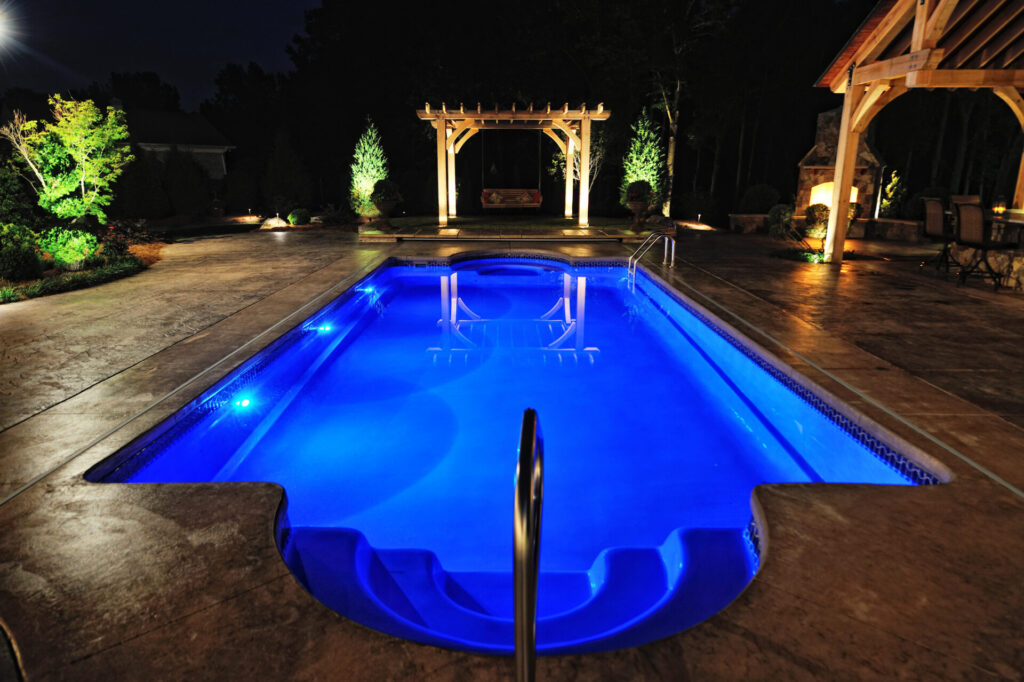
Strategic lighting can completely transform your pool’s ambiance. Energy-efficient LED lights illuminate the water at night and allow for customizable colours and effects to match different moods or occasions. From subtle, calming blues to vibrant party-ready hues, LED lighting enhances both aesthetics and safety while keeping energy consumption low.
Tanning Ledges
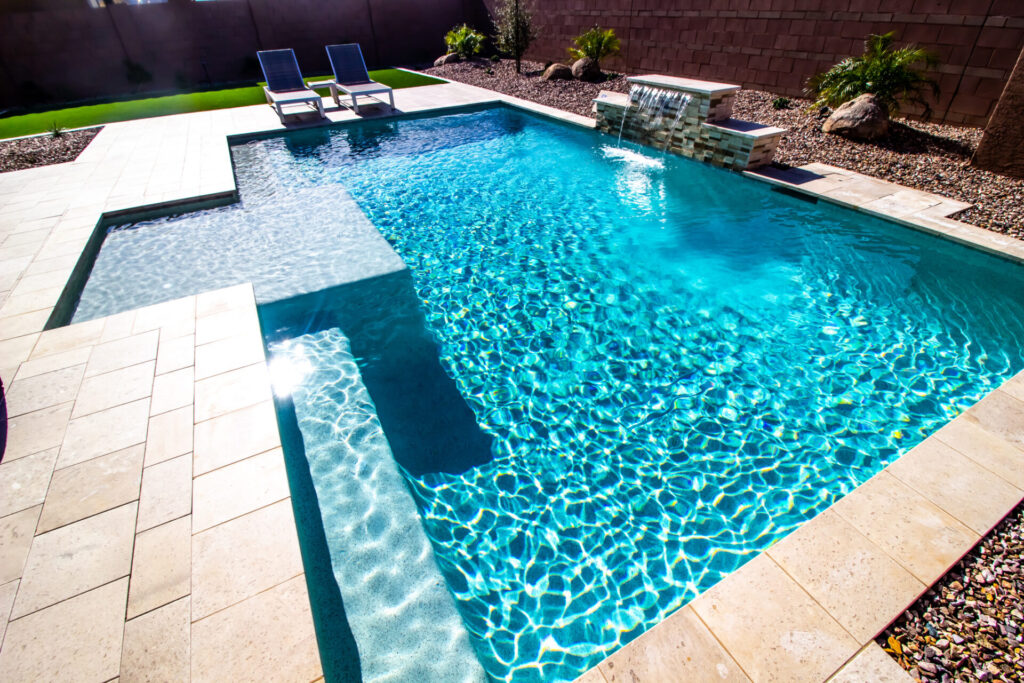
Tanning ledges, also called sun shelves, are shallow and flat areas. They are usually just a few inches deep. You can relax in the water while enjoying the sun. These ledges are perfect for placing in-pool loungers and are especially popular with families, as they create a safe and comfortable space for young children to play.
Smart Technology
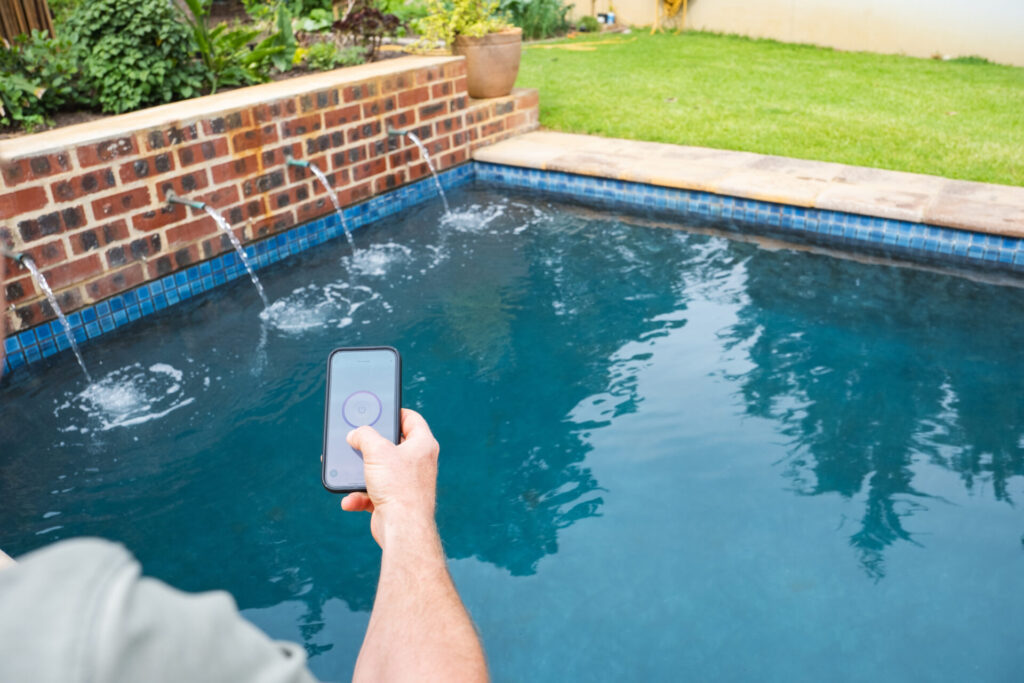
Advancements in pool automation make managing your pool easier than ever. Smart pool systems allow homeowners to control temperature, lighting, water features, and filtration systems remotely via a smartphone app. This adds convenience and helps optimize energy efficiency and maintenance, ensuring your pool is always ready to enjoy.
Want to incorporate the latest trends into your pool design? Click to learn more about how we can help you create a modern, stylish pool that fits your lifestyle.
Selecting the Right Pool Builders
The success of your pool installation hinges on the expertise of your contractors. A skilled and reputable builder ensures high-quality craftsmanship, a smooth process, and a finished product that meets your expectations.
Evaluating Experience and Reputation

Not all pool builders are created equal. Look for professionals with a strong track record of reliability, quality work, and satisfied clients. Reviewing past projects, checking references, and reading customer testimonials can offer valuable insights into their expertise. Industry certifications and memberships in professional organizations are also good indicators of credibility and commitment to best practices.
Assessing Communication and Transparency

A great pool builder isn’t just skilled in construction — they’re also clear and upfront in their communication. From project timelines and costs to potential challenges, transparency is key to a successful installation. A pool contractor who keeps you informed and addresses concerns quickly will help ensure a stress-free experience.
Understanding Contractual Obligations

Questions to Ask Before Hiring a Pool Builder

Choosing the right pool builder is crucial to the success of your project. Here are some important questions to ask before making your decision:
1. How long have you been in business?
Experience matters when it comes to pool installation. Look for a builder with a proven track record.
2. Can you provide references?
Speaking to past clients can give you insight into the builder’s reliability and quality of work.
3. What warranties do you offer?
A reputable builder should provide warranties for the pool structure and the equipment.
4. How do you handle delays or unexpected issues?
A good builder will have a clear plan for addressing challenges and keeping the project on track.
5. Do you offer maintenance services?
Some builders provide ongoing maintenance, which can be a convenient option for homeowners.
Looking for a pool builder who checks all the boxes? We’re committed to transparency, quality, and customer satisfaction. Schedule a consultation with our team today!
Pool Maintenance Tips for Longevity
Once your pool is installed, proper maintenance is the key to keeping it in top condition for years to come. Routine care preserves its appearance, extends its lifespan, and ensures a safe, enjoyable swimming environment.
Regular Cleaning and Chemical Balancing
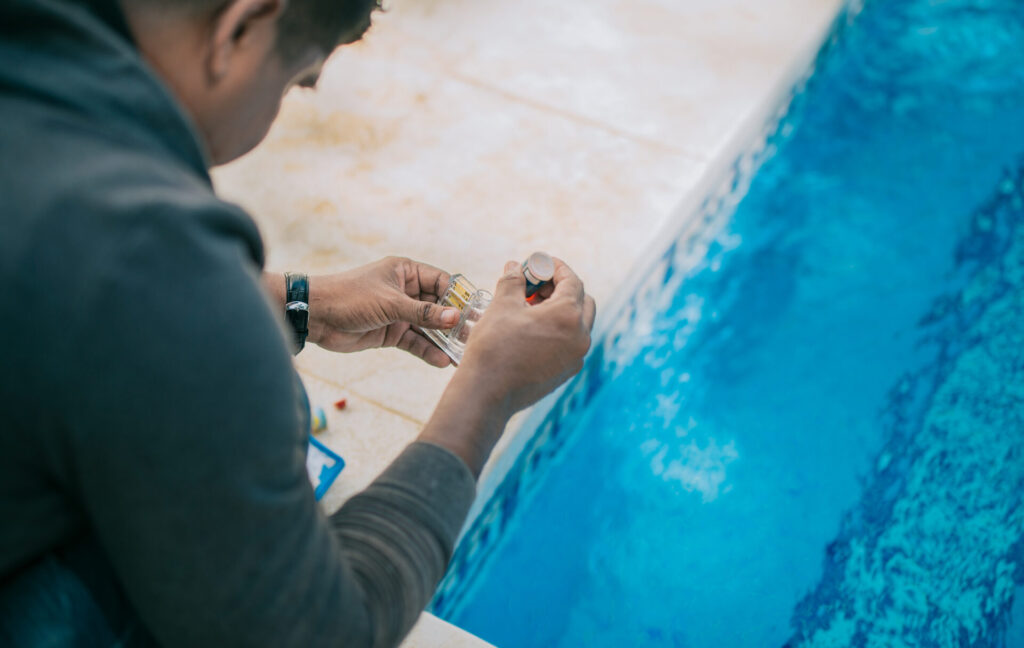
Keeping your pool clean and chemically balanced is essential for water clarity, swimmer safety, and preventing costly repairs down the line. A well-maintained pool stays inviting, requires fewer chemical adjustments, and minimizes the risk of algae buildup.
Skimming, Vacuuming, and Brushing
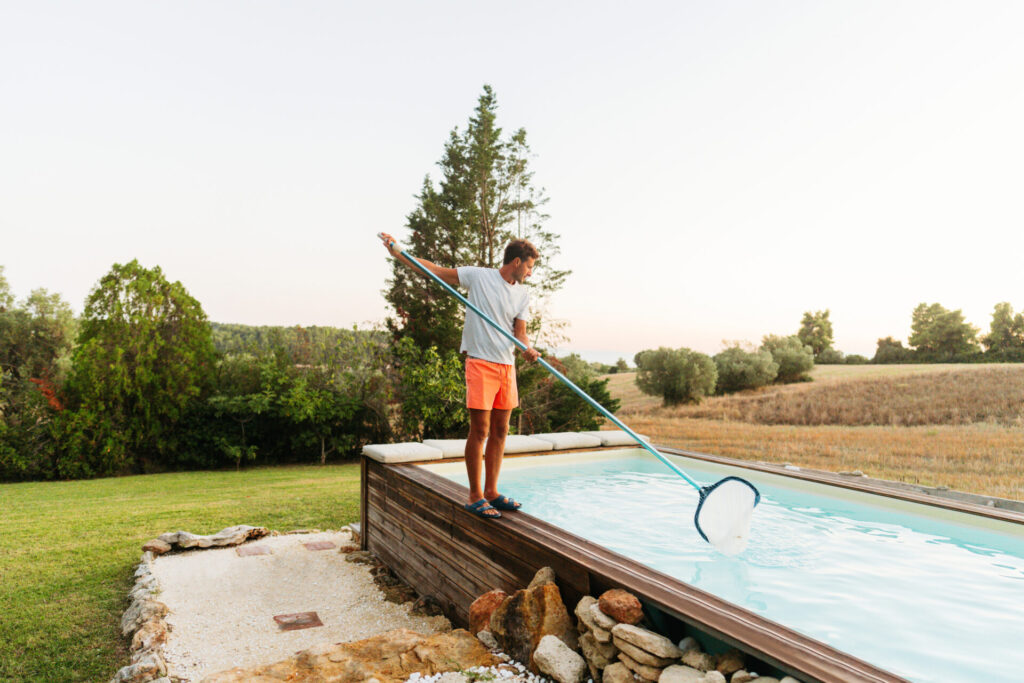
Debris, dirt, and algae can accumulate quickly, affecting water quality and aesthetics. Skimming the surface daily, vacuuming the pool floor regularly, and brushing the walls and tiles help prevent buildup, keeping the pool water clear and reducing strain on the filtration system.
Preventing and Treating Algae Growth
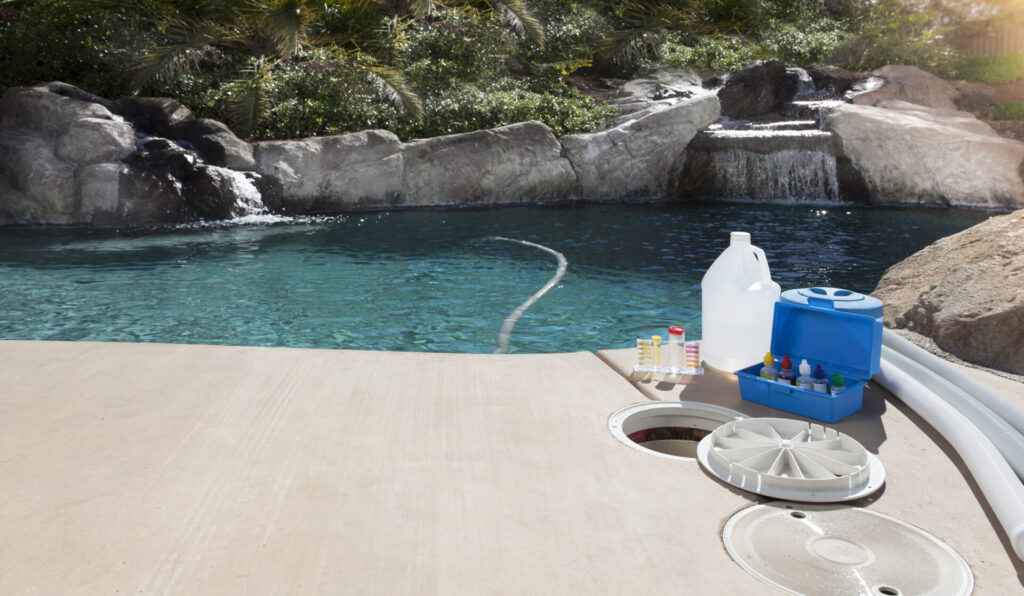
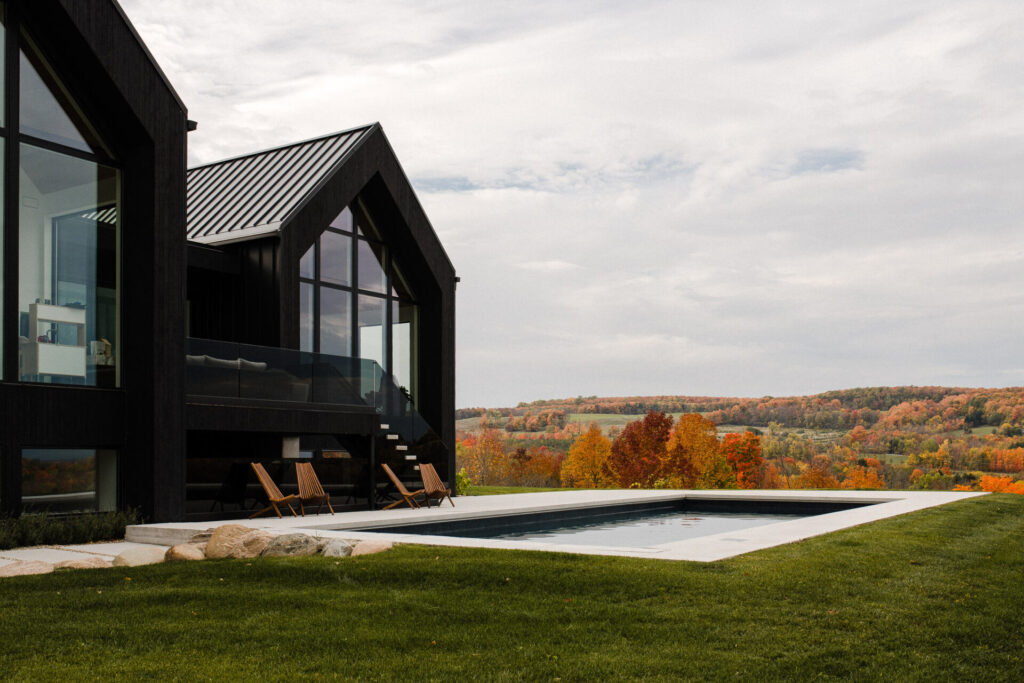
Maintaining your pool throughout the seasons is essential for optimal performance and safety. Following these seasonal maintenance tips can keep your pool in great shape year-round. Here’s how you can prepare your pool:
- Spring: As the weather warms up, it’s time to prepare your pool for use. Remove the pool cover, clear out any debris, and inspect the pool for signs of winter damage. Check for leaks, cracks, or equipment issues and rebalance chemicals to ensure safe swimming conditions. Run the filtration system for several hours to help refresh the water and prevent early algae growth.
- Summer: With frequent use, summer is when your pool requires the most attention. Skim the surface, vacuum the floor, and clean filters regularly to keep water crystal clear. Test chemical levels weekly and adjust as needed to prevent algae and bacteria buildup. Maintain proper circulation by running the pump daily to ensure clean, well-balanced water.
- Fall: As temperatures drop, your pool needs a transition plan. Thoroughly clean the pool, remove fallen leaves, and lower the water level to prevent freezing damage. Adding winterizing chemicals helps protect the water, reducing algae and bacteria growth during the off-season. If you’re closing the pool for winter, blow out plumbing lines to prevent freeze damage.
- Winter: Even when your pool isn’t in use, routine checks are essential. Keep the pool covered to block out debris and prevent water contamination. Inspect the cover periodically for damage or sagging, especially after heavy snowfall. If using a mesh cover, check water levels and chemical balance occasionally to ensure the pool stays in good condition for an easier spring opening.
Elevate Your Pool Area: Landscaping and Accessories
Pool Landscaping Ideas

To enhance the beauty and functionality of your pool area, consider incorporating these landscaping ideas that blend privacy, elegance, and ambiance:
- Privacy Hedges: Tall shrubs or trees, such as arborvitae or bamboo, create a natural barrier, offering both seclusion and a lush, resort-like feel.
- Decorative Stones: Pavers, flagstone, or pebbled walkways add texture and elegance, seamlessly blending the pool area with the surrounding landscape.
- Flowering Plants: Pops of colour from hydrangeas, daylilies, or ornamental grasses can bring vibrancy to the space. Opt for low-maintenance, pool-friendly plants that don’t shed excessive leaves or attract too many insects.
- Outdoor Lighting: Strategically placed LED or solar-powered lights highlight landscaping features and create a warm, inviting ambiance for evening swims.
Pool Accessories
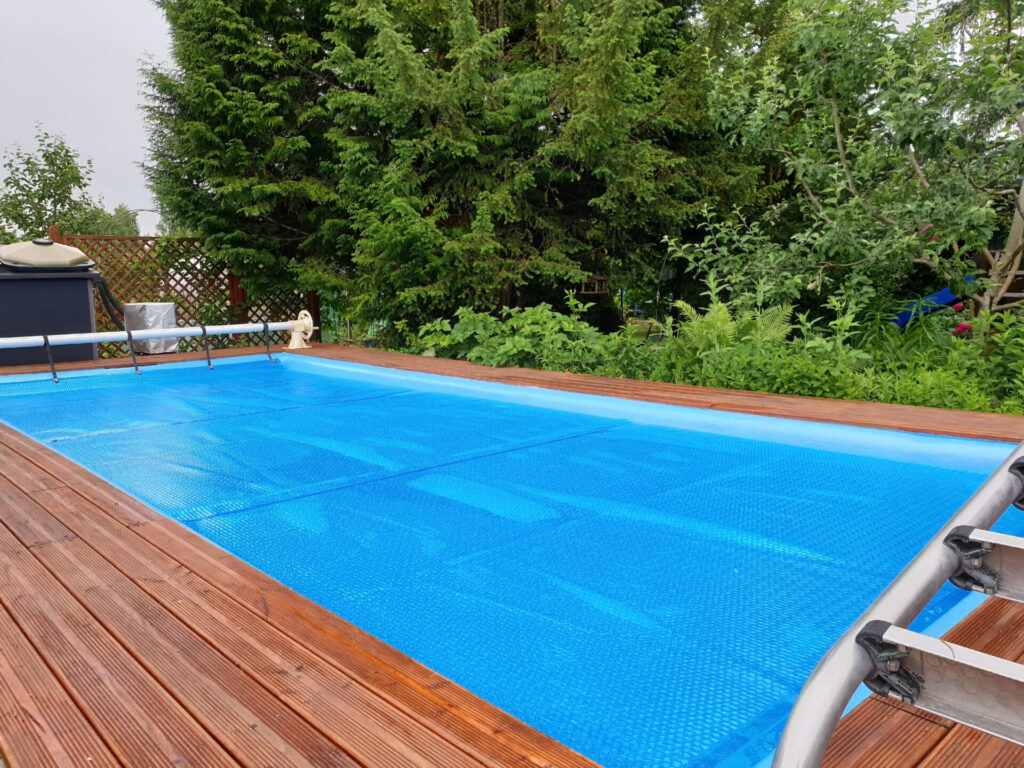
To take your pool area to the next level, the right accessories can add both practicality and style, making your space more enjoyable and easier to maintain:
- Pool Covers: A high-quality cover retains heat, reduces evaporation, and protects against debris, making pool maintenance easier year-round.
- Water Features: Cascading waterfalls, fountains, or bubblers add movement, sound, and visual interest, creating a more dynamic and relaxing environment
- Pool Furniture: Comfortable lounge chairs, umbrellas, and outdoor tables turn your pool area into a true leisure destination, perfect for sunbathing or entertaining guests.
- Safety Features: Adding a pool fence, safety cover, or alarm system provides peace of mind, especially for families with children or pets.
Creating a Cozy Atmosphere
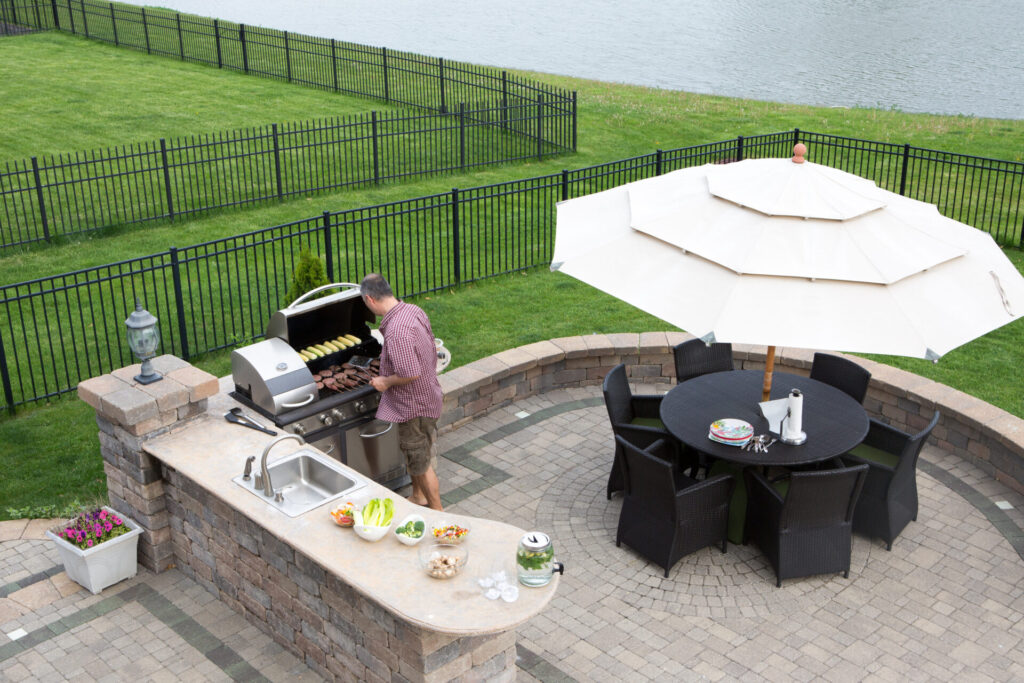
To make your pool area inviting and comfortable, think about adding these cozy elements:
- Outdoor Kitchen and Bar: Elevate backyard entertaining with an outdoor grill, mini-fridge, or fully stocked bar, keeping refreshments and meals conveniently within reach.
- Fire Pit: A fire pit adds warmth and ambiance, extending poolside gatherings into the evening and providing a cozy space to unwind.
- Shade Structures: Pergolas, gazebos, or oversized umbrellas offer relief from the sun while adding architectural interest to your outdoor space.
Advanced Maintenance and Pool Renovation
As pools age, they may require more advanced maintenance or renovation to retain their value and functionality. Over time, things like exposure to weather, chemicals and regular use can take a toll on your pool’s structure and equipment. Proactive care and timely upgrades extend the life of your pool and ensure it remains a safe and enjoyable space for your family. Whether it’s resurfacing, upgrading technology, or redesigning aesthetic features, investing in your pool’s upkeep can transform it into a modern, efficient, and beautiful backyard centrepiece.
Resurfacing and Repairing Structural Components
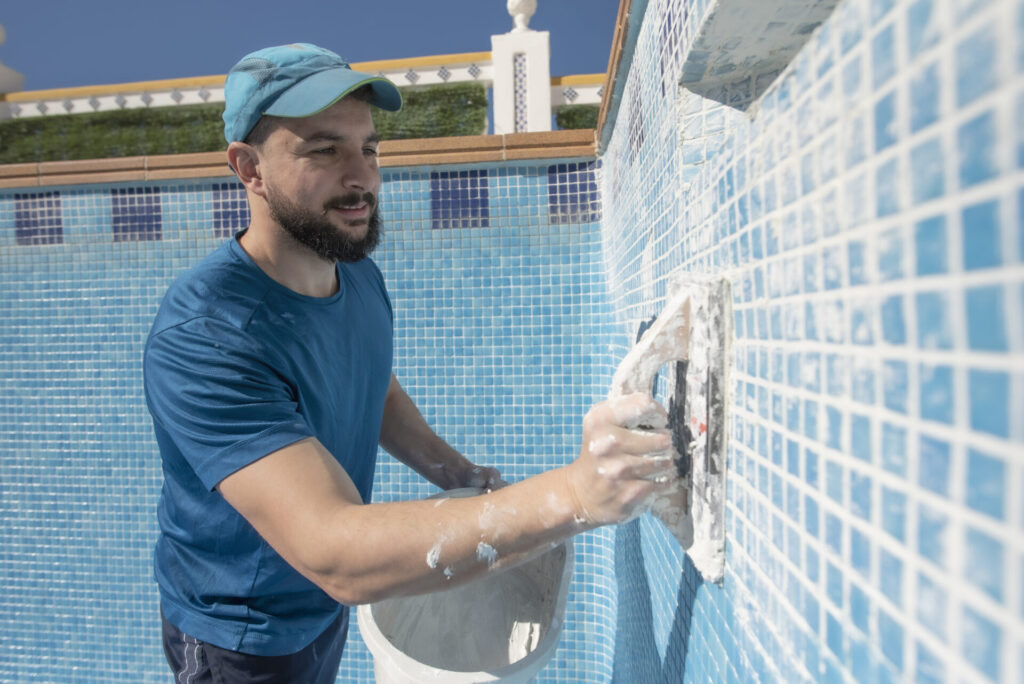
Regular inspections help to identify issues early and prevent costly swimming pool repairs down the line. Resurfacing isn’t only a time to fill any cracks — it’s an opportunity to give your pool a fresh new look. Modern finishes like pebble tec or quartz aggregates are stylish and add durability to the surface of your pool. If you notice any discolouration, rough patches, or frequent algae growth, it might be time to consider resurfacing. Addressing these issues early on will help to prevent water loss and potential structural damage, which can be costly repairs if left for an extended time.
Your Vinyl Liner Repairs
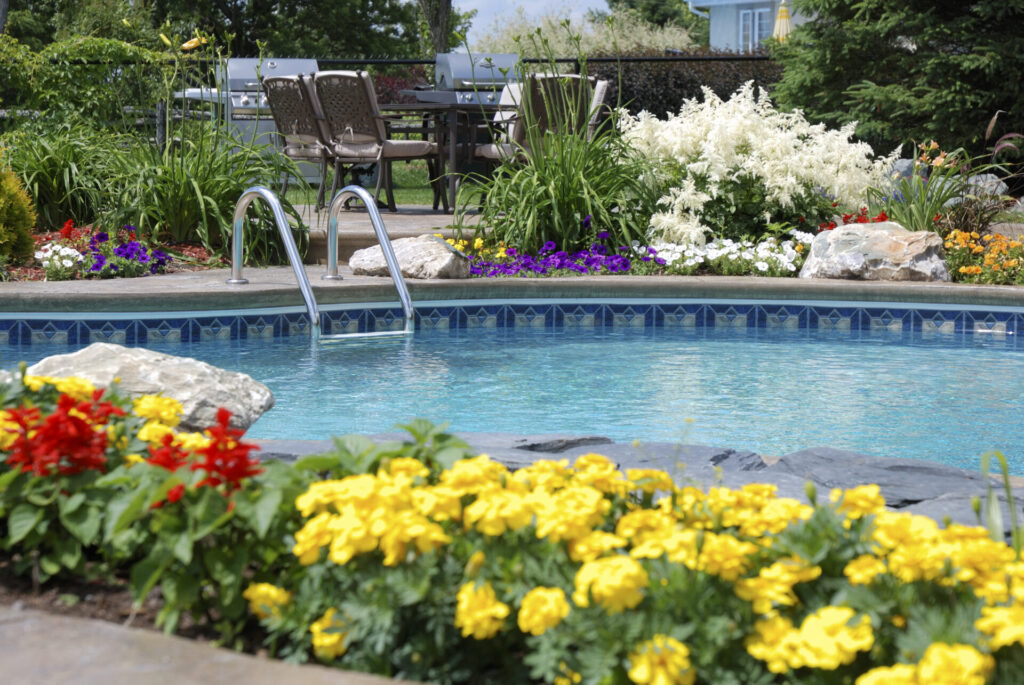
Your pool’s vinyl liner plays a crucial role in maintaining its appearance and functionality. Over time, exposure to chemicals, weather, and general wear can cause it to fade, wrinkle, or even leak. Most liners need replacement every 7-10 years, depending on maintenance. A worn-out liner affects your pool’s aesthetic and can lead to costly repairs if left unaddressed. Many homeowners are amazed at how a new liner with a fresh pattern can completely transform their pool, making it look brand new. If your liner is showing signs of aging, a high-quality replacement can restore the beauty and longevity of your pool, ensuring years of continued enjoyment.
Upgrading Pool Equipment and Technology
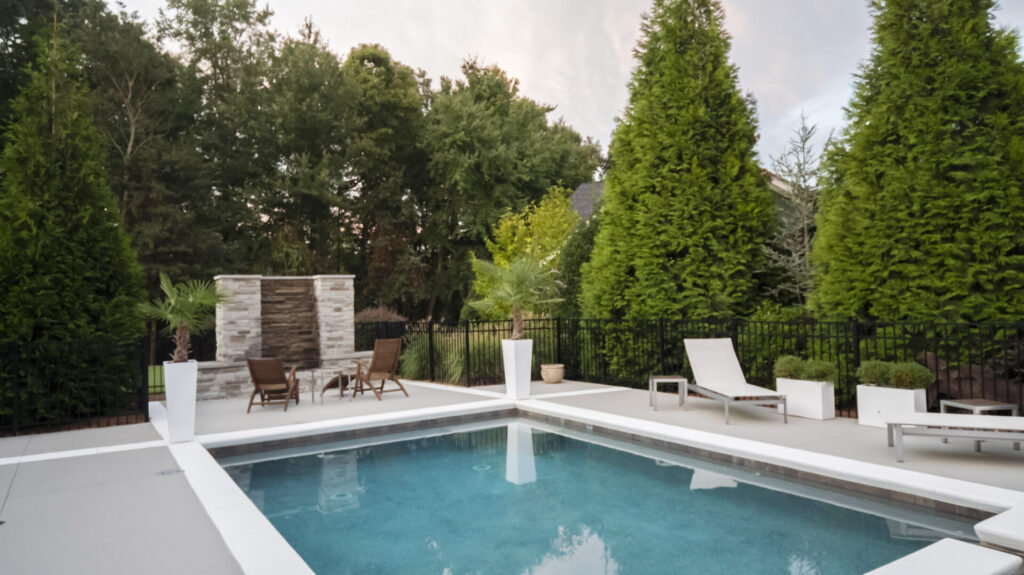
Advancements in pool technology offer opportunities to upgrade equipment for improved efficiency and performance. Investing in energy-efficient pumps, heaters, and filtration systems helps to reduce operational costs and enhance your swimming experience. Smart pool technology is revolutionizing how homeowners manage their pools. With the integration of an automated system, you can control the temperature of your pool, adjust lighting, and monitor filtration from your smartphone, even while you’re away from home. Energy-efficient equipment like variable-speed pumps can cut your energy bills by up to 90%. Upgrading your pool’s technology makes maintenance easier and enhances your overall swimming experience.
Redesigning and Enhancing Aesthetic Features
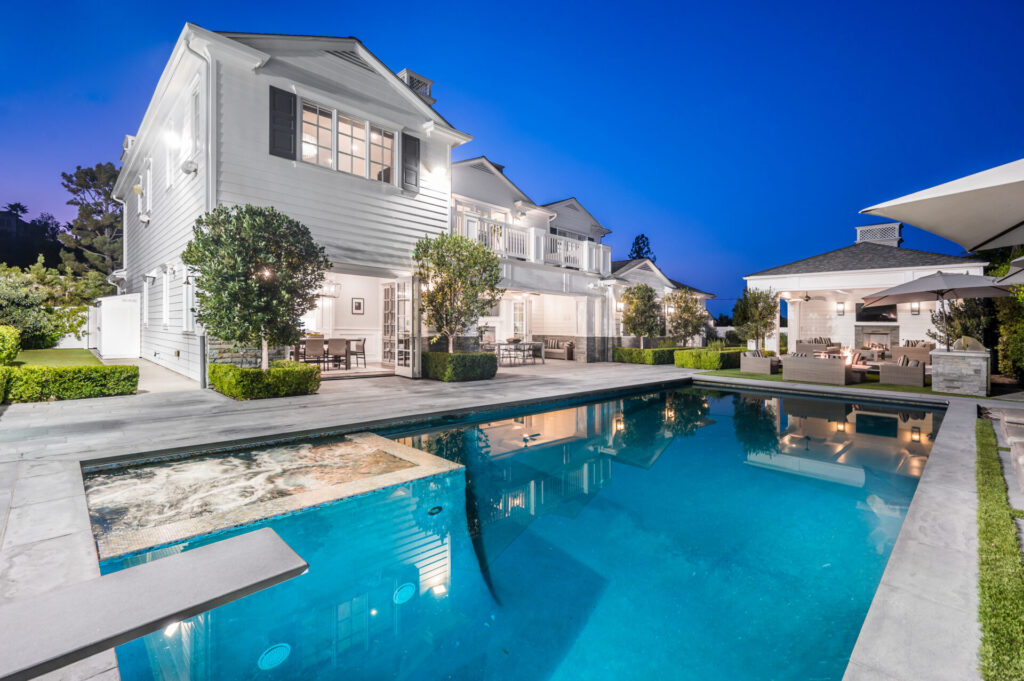
Swimming pool renovations go beyond aesthetics, redefining your space to enhance both style and functionality. Upgrades like stylish mosaic accents, a nice hot tub, a cold plunge, or new decking can change your pool area. These improvements can turn it into a relaxing space that fits your lifestyle and tastes. Other functional ideas include tanning ledges for lounging, a swim-up bar for entertaining, or a shallow area for kids to play. Modern pool designs emphasize sustainability, with options like solar-powered heaters and eco-friendly filtration systems. By working with a professional pool builder, you’ll create a renovation plan that maximizes both functionality and aesthetic appeal, which increases property value and ensures your pool remains a cherished part of your home for years to come.
Are you ready to turn your backyard into the ultimate retreat? At Georgian Bay Pools, we specialize in creating stunning, high-quality pools tailored to your vision and lifestyle. From initial design to final installation and beyond, our team is here to guide you every step of the way.
Don’t wait—your dream pool is just a consultation away. Schedule your free consultation today, and let’s start building your backyard oasis together!
